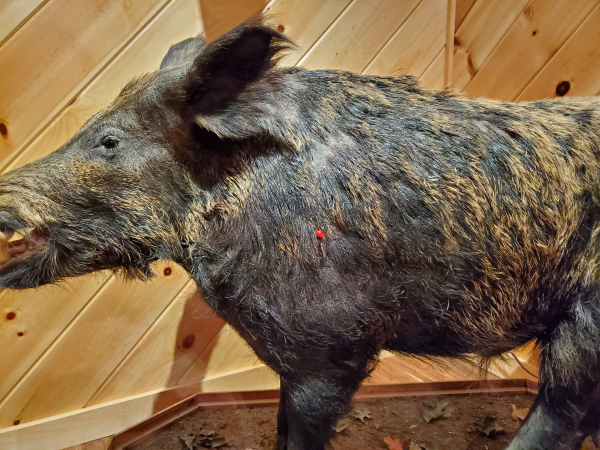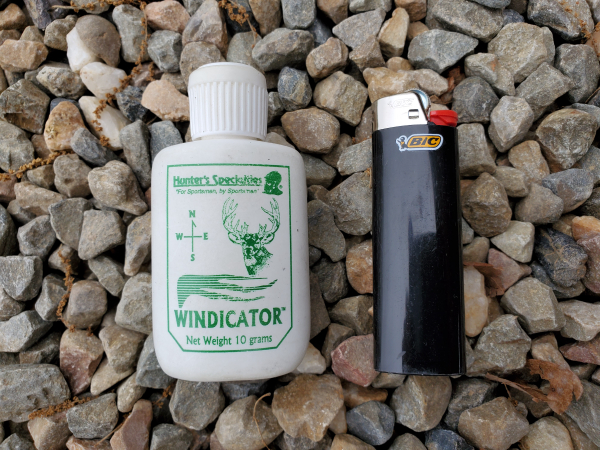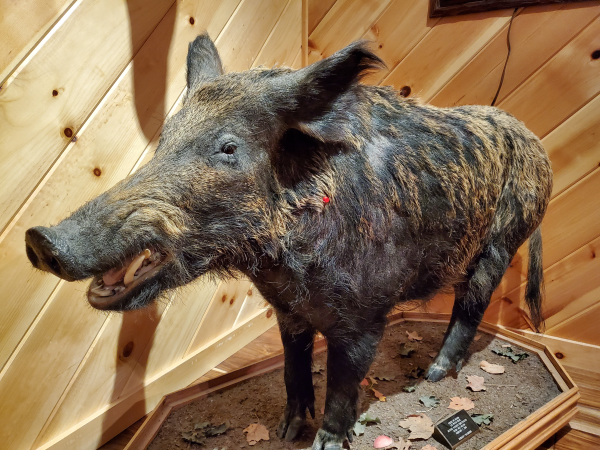The How To For Hog Hunting
Now that we've covered the basics of how to find hogs and shoot from field positions, our next challenge becomes how to get a shot at one.
The number one thing you must always be aware of when hog hunting is the wind direction; this is the primary sense hogs use to survive.
The easiest way to hunt hogs is from a downwind blind overlooking a corn feeder. As long as other food sources are scarce, and you can be quiet, this method has a very high success rate. The other common way to hunt hogs and my personal favorite is to spot and stalk them. While this can be very successful in both daylight and nighttime conditions, some of the things you will need to do will be different. During daylight hours or a bright moonlit night, you will need to focus on the wind and moving slowly while using all available cover; hogs pick up movement very well. However, if you're hunting on a night with thermal imaging equipment, the wind and being quiet are most important. I do lots of nighttime thermal hunting, and my observation has been that when its dark, hogs rely more on their hearing than they do during the daylight. Of course, a lot of this depends on how close you want to get for the shot. It's pretty easy to get within 100 yards or more of hogs during the night, but not so easy to get in position for a shot from 50 yards or less, especially if it's a clear sky night and there is a quarter moon or more.
Hogs are easy to kill with a properly placed shot! I repeat hogs are easy to kill with a properly placed shot! However, hogs are tough to kill with a poorly placed shot. In my opinion, less than 50-percent of the hogs shot at nationwide in dense cover areas are recovered. You can blame much of this on those same hunters being "deer" hunters. Shoot a whitetail deer behind the shoulder, and you've harvested the deer. Shoot a hog behind the shoulder where there are no vitals, and there is at least a 90-percent chance that you will not recover it no matter what caliber you shot! Putting a bullet in a hog and recovering that hog are two different things.
There are two different ways to kill hogs, and your shot placement will determine whether you have an easy or hard animal recovery. If you shoot a hog broadside in the center of the shoulder with any caliber which is capable of penetrating to the center of the animal, then you will kill that hog. However, a very high percentage of the time, the hog will run off like you missed it, and sometimes as far as 100 yards. A solid lung shot doesn't impress a big hog immediately. They have to run out of oxygen. Follow with me on this, it's 90 degrees out and pitch dark, you just made a perfect shoulder/lung shot that will kill the biggest hog 100-percent of the time, but the hog was standing at the edge of a thicket. You will now have to crawl into that stuff to find your hog. Houston, we have a problem!


Now, what if there is a way to kill every hog you shoot, and you won't have to crawl into that nasty thicket with the briars and snakes very often? There is! The solution is to sever the spine and wipe out the lungs. I call this my plan A, plan B shot.

If plan A works, I sever the spine, and the hog drops dead-right-there (DRT) or "Bang-Flop," depending on if you call yourself a tactical ninja or a Redneck. However, if you are a little high or low and don't sever the spine, you still have plan B, and the bullet goes into the lungs. For this shot, you want the hog slightly quartering toward you, and to place your shot in the center of the hog's neck. Trust me; it will kill the hog 100-percent of the time and drop it where it stands if your bullet severs the spine.
You might have noticed that I haven't even mentioned the "ideal" hog caliber or also discussed suitable calibers, we'll cover these in the next installment.